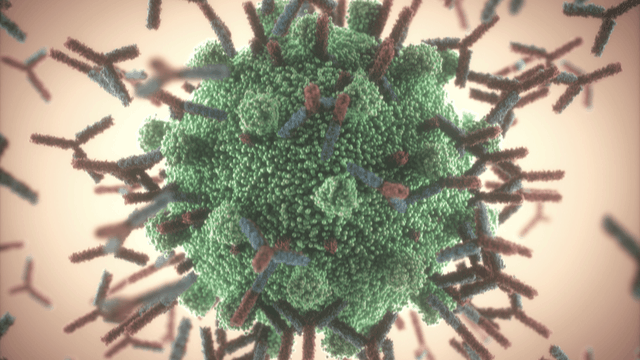July 06, 2021
Previous SARS-CoV-2 infection boosts vaccine efficacy. An investigation into the immune responses elicited from the Pfizer/BioNTech SARS-CoV-2 vaccine revealed heterogeneous responses between naïve and previously infected healthcare workers in the United Kingdom; 96% of previously infected individuals mounted a T-cell response against B.1.1.7 and B.1.351 variants, compared to only 70% of vaccinated naïve individuals. In general, the data indicate that there is a strong prime-boosting effect of prior infection to a single-dose vaccination. [Science]
High prevalence of mental disorders among adolescents one year after the COVID-19 pandemic. A cross-sectional study in Austria recently assessed the effects of remote schooling due to the COVID-19 pandemic among 3,052 students aged 14 to 20 years old (70.1% girls). Students exhibited clinically relevant depression and anxiety symptoms (55% and 47%), moderate insomnia (22.8%), and disordered eating behavior (59.5%). While 36.9% had suicidal ideation in the past two weeks, 8.9% had suicidal ideation every day. Life satisfaction (on a scale from 0 to 10) decreased from 7.1 to 5.9 in girls and from 7.6 to 6.3 in boys. [JAMA Network]
B.1.1.7 lineage associated with higher rates of CCU admission and mortality. A recent study assessing mortality and critical care unit (CCU) admission rates among SARS-CoV-2 positive individuals with or without the B.1.1.7 variant in the United Kingdom showed an increased 28-day mortality rate for patients with the B.1.1.7 lineage (0.5%) compared to those without (0.4%). While the risk of admission to the CCU was also higher for patients with the B.1.1.7 lineage, mortality among patients in the CCU was independent of the virus strain. [The Lancet]
CoronaVac safe in children and adolescents. A recent, double-blind, randomised, controlled, phase 1/2 clinical trial tested the safety, tolerability, and immunogenicity of the CoronaVac in children ages 3 to 17 years old. Participants received the vaccine (1.5 μg or 3.0 μg dose) or aluminum hydroxide only (control) on days 0 and 28. Of the 550 participants, 27 % reported a mild or moderate adverse reaction, with the most frequent one being injection site pain (13%) and fever (5%). Neutralizing antibody concentrations were higher with the 3.0 μg dose and a two-immunization schedule, warranting further studies in children and adolescents. [The Lancet]
Decline in life expectancy between 2018 and 2020 in the US larger than in other peer countries. Researchers used simulations of provisional mortality data to estimate and compare changes in life expectancy from 2010-2018 and during the COVID-19 pandemic in 2020 in the United States and other high-income countries. Between 2018 and 2020, life expectancy in the US decreased by 1.87 years (to 76.87 years), 8.5 times the average decrease in peer countries. The decline in life expectancy was greater for men than women (2.16 vs. 1.50) and disproportionally distributed among ethnic minorities; life expectancy for black men fell to 1998 levels (67.73 years). [BMJ]
Extensive unnecessary use of antibiotics in ambulatory care in the US. A retrospective cross-sectional study showed that between July 2018 and June 2019, 39% of the 5,331 antibiotic prescriptions in ambulatory care in an integrated healthcare system (Denver Health) in the United States lasted longer than the recommended five days. Urgent care centers were responsible for more than half of longer than recommended prescriptions, while men were more likely to be prescribed a longer than recommended duration of therapy than women, especially when treating UTIs (40.1% vs. 19.2%). Adherence to the recommended 5-day duration would have averted 6,657 antibiotic-days (20%). [Open Forum Infectious Diseases ]
Patients’ perceptions and practices on antibiotic use in Uganda. A cross-sectional study at Kiruddu National Referral Hospital in Uganda assessed perceptions and practices of antibiotic self-medication and misuse among patients from the outpatient department. Of the 279 participants, 60.4% had taken antibiotics in the past six months, and 22.2% had self-medicated. One-third of the patients did not complete the treatment for reasons such as feeling better (60%), lack of funds (15.7%), and side effects (10%), emphasizing the need for public awareness programs on antibiotic use and resistance. [Infection and Drug Resistance]
Lower- and upper-middle-income countries show higher levels of multidrug-resistance in the ICU setting. A large cross-sectional study profiling multidrug-resistant organisms (MDROs) in patients with bacteremia in 57 ICUs in 24 countries showed that most infections were hospital-acquired and that 70% of the 771 isolates collected were hospital-acquired MDROs, of which 4.9% showed extensive drug resistance (XDR). MDR rates varied across lower-middle-income (LMI) (25.9%), upper-middle-income (UMI) (58.8%), and high-income countries (15.3%), while XDR was only present in LMI and UMI countries. [EJCMID]
Healthcare workers’ perception of antibiotic prescription in Tanzania. A qualitative study in Tanzania showed that primary healthcare workers based their decision to prescribe antibiotics for children under five on clinical examination and the medical history provided by the mother. Parents sought antibiotics when not prescribed; however, when restricted by financial means, the prescription was guided by drug availability, and doses were adjusted accordingly. While primary healthcare workers acknowledged the impact of antimicrobial resistance (AMR) at the patient level, there was no mention of AMR in relation to public health. [Antimicrobial Resistance & Infection Control]
Community healthcare workers, essential at building health system resilience in Africa. In a recent editorial, researchers review and make recommendations on factors that can boost health system resilience in African countries. Recruitment and training of community health workers are considered pivotal in engaging communities and helping health systems adapt to shocks and stressful situations, such as the current COVID-19 pandemic. Other factors promoting resilience at the community level are improvements in medical and diagnostic supplies, better data governance and evidence-based practice, and health infrastructure development. [BMJ Global Health]
Photo: Shutterstock













